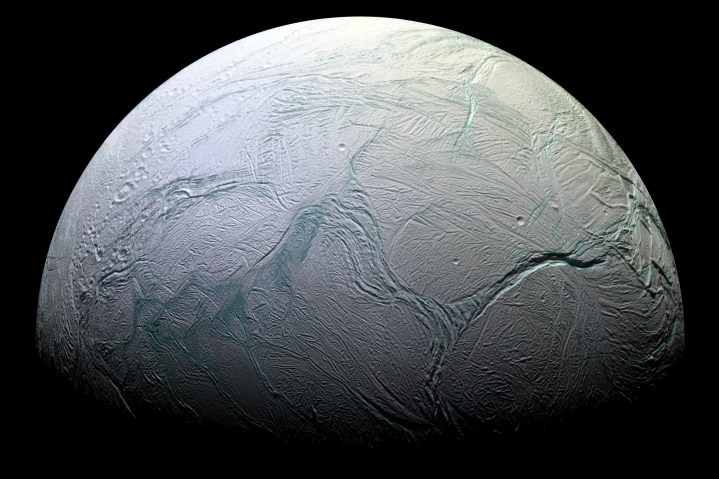When it comes to searching for places beyond Earth where life could thrive in our solar system, some of the most intriguing targets aren’t planets but rather moons. From Jupiter’s icy moons like Europa to Saturn’s moon Enceladus, these places are thought to host liquid water oceans beneath thick ice crusts which could potentially support life. Now, new evidence suggests support for the habitability of Enceladus, and NASA is developing missions to travels to these distant moons and search for evidence of life.
The research about Enceladus, published in the journal PNAS, shows that there seems to be dissolved phosphorus in the moon’s ocean, which is an important ingredient for life. It is used in the creation of RNA and DNA, is found in cell membranes, and is found within our bodies in out bones and teeth. By studying data from the Cassini probe, the researchers were able to create a model of the ocean of Enceladus and how minerals would dissolve in it.

This reflects a change in approaches to habitability. It used to be more common to look for potentially habitable planets within the habitable zone of a star, where liquid water could exist on the surface. Now, an alternative approach is to look for oceans which may form beneath the surface on colder worlds and could have the required ingredients for life.
“The quest for extraterrestrial habitability in the solar system has shifted focus, as we now look for the building blocks for life, including organic molecules, ammonia, sulfur-bearing compounds as well as the chemical energy needed to support life,” said one of the researchers, Christopher Glein of the Southwest Research Institute, in a statement. “Phosphorus presents an interesting case because previous work suggested that it might be scarce in the ocean of Enceladus, which would dim the prospects for life.”
With the new findings suggesting that phosphorus could be relatively plentiful, Glein argues that we need to visit the place again to learn more: “We need to get back to Enceladus to see if a habitable ocean is actually inhabited.”
One potential tool to make this happen is a NASA program at the Jet Propulsion Laboratory. The Ocean Worlds Life Surveyor (OWLS) project has created a group of scientific instruments especially for analyzing liquid samples, which would be ideally suited to researching ocean worlds like Enceladus. To access that water without having to drill through the thick icy crust, one possibility would be to fly a spacecraft through the plumes of water that erupt from the moon’s surface.
“How do you take a sprinkling of ice a billion miles from Earth and determine – in the one chance you’ve got, while everyone on Earth is waiting with bated breath – whether there’s evidence of life?” said Peter Willis, the OWLS project’s co-principal investigator and science lead, in a statement. “We wanted to create the most powerful instrument system you could design for that situation to look for both chemical and biological signs of life.”
Editors’ Recommendations
